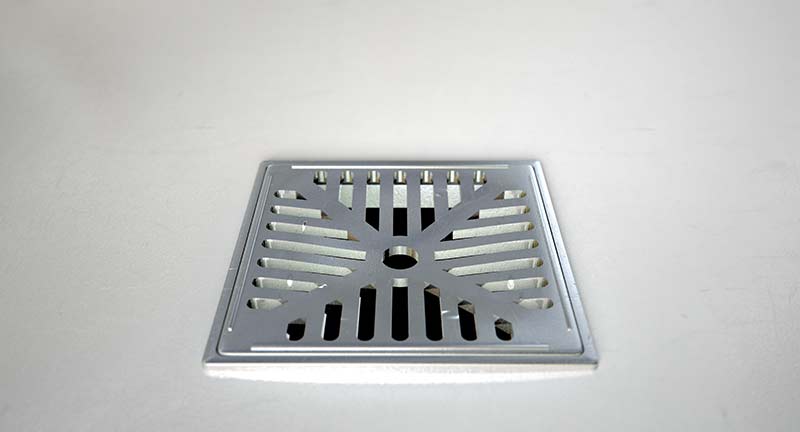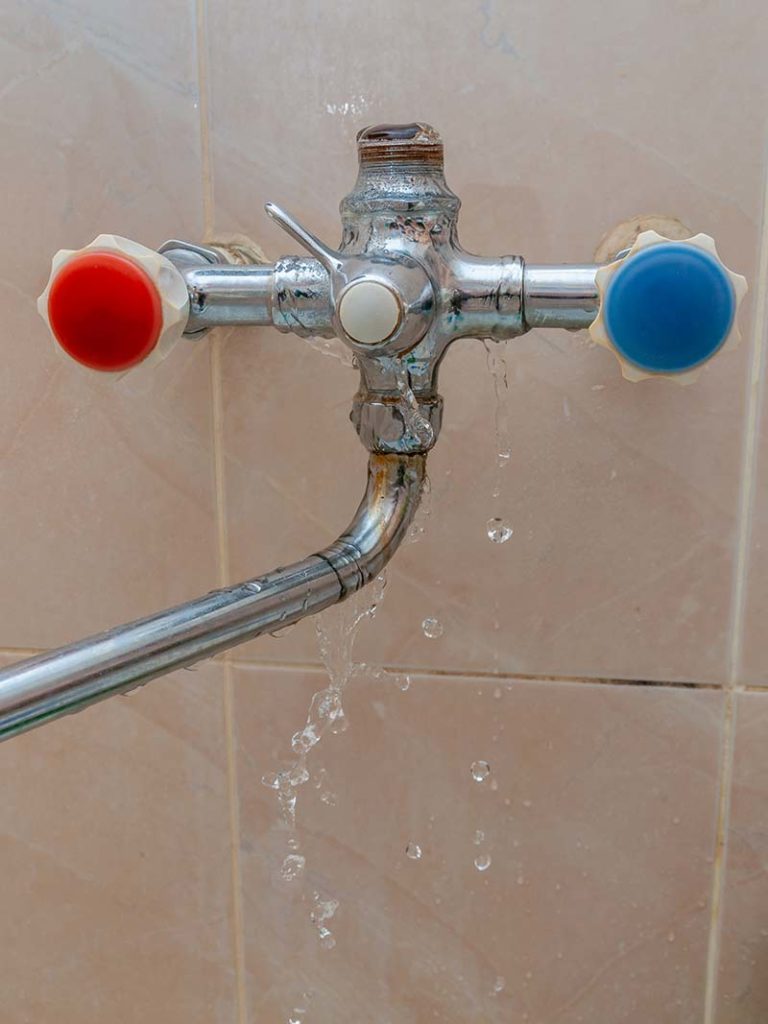Easy Way to Install a Shower Drain Gasket
Do you want to fix a leaking shower drain without the fuss of taking out the pan? Then you've come to the right place. You'll find the simplest instructions for this DIY job in this article!
Here's how to fix a leaking shower drain without taking out the pan:
- Remove the drain cover
- Discard the compression gasket
- Remove the shower drain body
- Clean the rim of the drain
- Install the new gasket
- Screw in the new shower drain body and seal it with putty
- Remove any excess putty from around the drain
Fixing a leaking shower drain on your own doesn't have to be an expensive nor complicated job. But if you're completing this job for the first time, take a look at what's coming up next.
You'll see a more in-depth explanation of the previously listed steps. They'll guide you to fix your leaking shower without calling a professional!

Fixing a Leaking Shower Drain Without Taking Out the Pan
So you've spotted a yellow stain or mold running across the ceiling. And where is it? Slap bang under the shower unit upstairs. There's only one thing it could be. A leaking shower drain.
Now I know what you're thinking. Anytime you hear the word "leak" mentioned at home you automatically get a bad feeling in your stomach. How much is it going to cost this time?
But there's good news. Fixing a leaking shower drain doesn't have to be an expensive job. It's even possible to do it without taking out the shower pan. Yup, that means no ripping up the tiles and no redecorating costs.
Take a look at the steps mentioned below that will set you on the right path to fixing your leaking shower drain. To get you started, here's a list of all the tools you'll need for the job:
- A #2 Phillips screwdriver
- A flathead screwdriver
- Groove pliers
- A hacksaw
- A rag
- A cleaning brush
- A new gasket (common at most hardware stores – make sure you get the right size)
- Plumber's putty
1. Remove the Drain Cover
To begin, remove the metal drain cover from the drain. On some drains, you might be able to flip the cover off with a flathead screwdriver. On others, you'll have to remove the screws. If this is the case, put the screws in a safe place so that you can put the cover back on later.
2. Discard the Compression Gasket
Use the pliers to remove and discard the compression gasket. Clip the pliers one on each side of the gasket. Turn it counterclockwise until it has come loose. Then pinch the gasket on one side with the pliers and pull it out of the drain.
Unthread and remove the large compression nut from the drain with the pliers.
3. Remove the Shower Drain Body
Here comes the fun part. Use the hacksaw to make two vertical cuts approximately one inch apart through the body of the drain. Then use the hacksaw to cut through the drain flange.
When cutting the drain flange, be careful not to cut into the shower pad! You should also make sure that the blade doesn't go through the pipe riser!
Tease the one-inch piece out of the drain using the flat head screwdriver. You'll then be able to squeeze and tease the rest of the shower drain body out of the drain.
Remove any plumber's putty from the outside of the shower drain body. You can use the flat head screwdriver or just your hands to remove the putty.
4. Clean the Rim of the Drain
Once you've removed the shower drain body, you will have exposed the rim of the pan. Don't worry, even in the most spotless of showers, this rim will be filthy. Clean the rim thoroughly before continuing. You can use a rag to clean the rim.
Clean the opening of the drain with a cleaning brush. This will remove any debris that could block the installation of the new gasket.
5. Install the New Gasket
Leap for joy as you're halfway there! Here comes the easy installation part.
Slide the new gasket into the opening. It should sit on the center of the drain body's rim. Use your fingers to spread the outside of the stainer body with plumber's putty. Make sure that there is plenty of putty under the rim of the strainer.
6. Screw-in the New Shower Drain Body and Seal It With Putty
Screw the new shower drain body into the opening. Turn the new shower drain body clockwise until it has tightened into place.
7. Remove Any Excess Putty From Around the Drain
Use a putty knife to wipe away any excess putty from the drain. You can tidy it up with a rag. Leave the shower unit to dry overnight before using it.
The next day, return the drain cover to the drain.
Reward yourself with a night in on the sofa. You'll enjoy peace of mind now you know your ceiling won't leak every time you shower. Hurrah!
What Causes a Leaky Shower Drain?
A leaky shower drain creates problems in the bathroom. But it also opens up a can of worms in other areas of the house. A leaky drain can:
- Dampen the ceiling and insulation
- Rot the ceiling beams
- Discolor the ceiling
- Become a breeding ground for mold and cause respiratory problems and allergies
Unfortunately, the longer these problems are left, the harder it becomes to fix them. This can in time lead to bigger and more expensive repairs. So you may be wondering, what makes your shower drain start to leak in the first place?
Take a look at a couple of problems that cause shower drains to leak. You will also see some fixes below that will help you to sort the problems.
| The Problem | How to Fix the Problem |
| Leaking Traps – All sink and shower drains lead to traps. Over time these traps can begin to leak. There may even be a small crack in the trap itself which would lead to a leak. | – Tighten the slip nut with your hands. Then give it an extra tighten once over with a pair of small pliers. – If tightening the slip nut doesn't work, remove the trap. Replace the rubber washers if they have gotten hard or they have deteriorated. – If the pipes have rusted, replace them. |
| Loose Strainers – Strainers in the drain can become loose over time. If they are not connected properly to the drain they could trigger a leak. | – Check the connections in the drain. If they are loose, tighten them. – If the strainers are cracked, replace them. |
| Rusted Connections – Leaks are sometimes due to loose or rusted water supply connections. This could be the fault of bad installation or simple wear and tear. | – Check the water supply connections. If they are loose, tighten them. Some connections will continue to leak even when they are tight. This is because they have developed pinhole leaks around the connections. Pinhole leaks could develop due to the age of the system. In this case, replace the connections. – If the connections are rusty, replace them. |
Aside from the shower drain, leaks can also start in other parts of the shower. Here are some other areas that could start to leak:
- The solder connects of shower valves
- The faucets
- The gaskets and springs around the inlet holes
- The cartridge or ball valves

Now that's likely got you wondering, how can you fix a leak in these parts of the shower? Take a look at some of the quick fixes mentioned for these problems.
| The Location of the Problem | How to Fix the Problem |
| Solder Connects of Shower Valves | – Tighten the connections – Replace connections that are old and rusty as these may have developed pinhole leaks |
| Faucets | – Replace the rubber gaskets in the faucet – Replace the washers in the faucet |
| Gaskets and Springs Around the Inlet Holes | – Replace the gaskets and springs – Replace the washers in the valve |
| Cartridge or Ball Valves | – Inspect your cartridge or ball valve. If it is cracked, replace it. |
Conclusion
Finding a leak in the shower drain is a bit of a nightmare. The only thing that's worse than the initial discovery is thinking about how much a professional repair will cost. That's why this article has gone through all the steps you need to fix your shower drain. I hope you have been able to fix yours without the hassle of removing the pan.
If this article has helped you, then why not check out some of our other articles and free guides? You could even sign up to our email list!
Have a great day!
-Craig
rhodeshilewhousels.blogspot.com
Source: https://applianceanalysts.com/fix-leaking-shower-drain/
Post a Comment for "Easy Way to Install a Shower Drain Gasket"